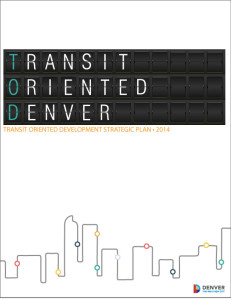Someone over at The Nib has a lengthy explanation of why public transit is crumbling. Apparently, it’s due mainly to the Koch Brothers and myself. While it would have been more realistic picturing me on a bicycle than behind the wheel of a car, I am nonetheless flattered; yet the reality is a little bit more complicated.
The article — okay, it’s a web comic — suggests that transit can somehow transform cities into clean, healthy, crime-free paradises. Light-rail lines, the authors suggest, fall short of this dream because they generally don’t have a dedicated right of way and therefore “aren’t fast or reliable and don’t carry enough passengers to reduce traffic.” Thus, they explicitly endorse “rapid transit,” meaning bus or rail lines that have their own dedicated rights of way.
While transit had an impact on American cities before the automobile became ubiquitous and more recently has had similar impacts on cities in developing countries that still have low rates of auto ownership, there’s little evidence that dedicated transit lines can transform auto-oriented cities. Indeed, heavy investments in transit have had negligible effects on cities other than by increasing the tax burden on their citizens.
- Cleveland can hardly be said to have been transformed by its rail lines built in the 1950s.
- Baltimore and Miami each built rapid transit rail lines in the 1980s that are abject failures. The high cost of the region’s rapid transit system was largely responsible for a two-thirds decline in per capita transit ridership.
- Similarly, San Francisco’s BART system contributed to a one-third decline in that region’s per capita ridership.
- Since building the nation’s largest light-rail system plus lengthy commuter-rail lines, Dallas has seen a one-third decline in transit’s share of commuting.
- As Los Angeles expands its multi-modal rail system, it loses multiple bus riders for every rail rider gained.
- Seriously, can anyone really see any major transformations in Denver, Minneapolis-St. Paul, Sacramento, San Diego, or San Jose since they built rail lines?
The authors recommend that cities “carefully review projects and copy what works elsewhere.” But their selections of “what works” leave something to be desired. For example, they include Phoenix light rail because “it’s fueling growth.” This is based on a list of developments that Valley Metro ![]() claims were stimulated by light rail, yet this list mostly consists of projects that are imaginary (planned but never built), heavily subsidized (many multifamily developments received significant low-income housing subsidies), or would have been built anyway (including a school and an expansion to Phoenix’s convention center). There’s no evidence that Phoenix is growing faster than it would have growth without the light rail.
claims were stimulated by light rail, yet this list mostly consists of projects that are imaginary (planned but never built), heavily subsidized (many multifamily developments received significant low-income housing subsidies), or would have been built anyway (including a school and an expansion to Phoenix’s convention center). There’s no evidence that Phoenix is growing faster than it would have growth without the light rail.
There are many other misconceptions, but the real point is that the authors firmly believe that transit can only work if it is given much larger subsidies than the $50 billion a year it already receives. Yet how big do those subsidies have to be to satisfy transit advocates? The Denver, Minneapolis-St. Paul, Sacramento, San Diego, and San Jose urban areas spend more than half of their transportation dollars on transit systems that carry less than 5 percent of commuters to work and less than 2 percent of total passenger travel. If transit isn’t working in these urban areas, why should any others follow their examples?
Transit is really expensive, and dedicated rapid transit lines are even more so. Such dedicated lines might work in New York City and a few other places, but in most of America they would be used by few people. As a result, transit has a significant impact in only a few American urban areas — New York, Chicago, Philadelphia, Washington, Boston, San Francisco-Oakland, and Seattle — most of which experienced most of their growth in the nineteenth century before the automobile became the predominant form of travel. Simply building new transit lines will not transform twentieth century cities into nineteenth century ones, nor is it particularly desirable to do so.
Randal O’Toole is director of the Transportation Policy Center at the Independence Institute, a free market think tank in Denver. His most recent book is Romance of the Rails: Why the Passenger Trains We Love Are Not the Transportation We Need. A version of this article originally appeared in his blog, The Antiplanner.


